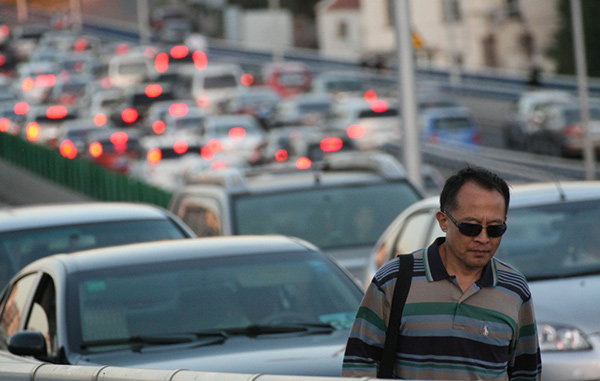Make urban planning sustainable, visionary
(China Daily) Updated: 2016-02-23 07:09
 |
|
A man walks among conjested vehicles on a street in Qingdao, East China's Shandong province on Sept 29, 2012. [Photo/IC] |
The State Council, China's Cabinet, released a document on strengthening the administration of urban planning on Sunday. It sets a clear guideline of how the country's urban development should be regulated to make it more healthy and sustainable.
It sets out the basic principles and key tasks for healthy urban development so that cities are "orderly constructed, properly developed, and efficiently operated".
As the document points out, there have been prominent problems with the country's urban development in the past couple of decades due to visionless urban planning and blind expansion of cities without efficient use of resources, which have rendered urbanization unsustainable in a lot of cities.
With city leaders preoccupied with the scale of urbanization rather the quality, many cities have inadequate drainage, sewage treatment and garbage disposal systems, and not enough public services for the increasing number of residents.
It is definitely right and necessary to emphasize the role urban planning plays in city development. In the first place, urban planning must be made with a vision of the future and with a wide range of factors taken into consideration. In other words, city development needs to put human needs first.
The serious pollution and other urban ills greatly compromise the safety and quality of life urban residents should have enjoyed had the urban planning been better.
Yet, it is much easier to point out the existing ills than to redress them in a practical manner. It is one thing to sketch a healthy and sustainable road map but completely another to materialize the road map with enough attention paid to and efforts made on every detail relevant to the quality of urban development.
Only when the latter is done well can the country's urban development be shifted onto the right track.





